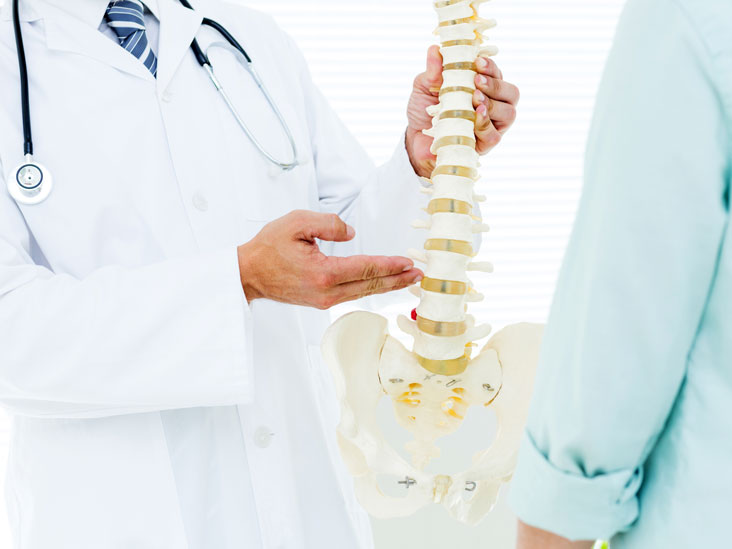Article reviewed and approved by Dr. Ibtissama Boukas, physician specializing in family medicine
What is the thoracolumbar hinge, and what is its role? What are the pathologies associated with this important region of the spine?
This explanation tells you everything you need to know about the thoracolumbar hinge.
Definition and anatomy
To understand the thoraco-lumbar hinge, one must first understand the anatomy of the dorsal spine and Lumbar spine.
There are 12 dorsal vertebrae (numbered D1 to D12). The alignment of these vertebrae at the trunk level means that they allow a lot of rotation.
The lumbar vertebrae are 5 in number. Unlike the dorsal column, these vertebrae in the lower back are not very mobile in rotation. Rather, their alignment allows for more flexion and extension movements.
The junction between the last dorsal vertebra and the first lumbar vertebra is called the thoracolumbar hinge. It corresponds to the space between the D12 and L1 vertebrae. (also called D12-L1).
Pathologies related to the thoraco-lumbar hinge
The last thoracic vertebrae (D11 and D12), as well as the first lumbar vertebra (L1), are frequently the site of spinal pathology and dysfunction.
Indeed, the dorso-lumbar hinge undergoes a lot of stress, in particular because it constitutes a transition zone between the end of the dorsal vertebrae and the ribs with the lumbar vertebrae. This can lead to degeneration and irritation of the facet joints.
Specifically, when the rotational forces of the dorsal spine are transmitted to the lumbar vertebrae, (as in twisting movements), the surrounding tissues must absorb this force to protect the Lumbar spine from any excessive rotation. The more these movements are repeated (and accompanied by heavy loads), the greater the risk of irritation and inflammation of the surrounding vertebral structures.
Additionally, static sitting and standing postures (especially when held for long periods of time) place additional stress on the thoracolumbar hinge, increasing the risk of inflammation there.
Here is a list of pathologies of the thoraco-lumbar hinge:
- Maigne syndrome (or thoraco-lumbar hinge syndrome)
- Fracture
- Tuberculosis in children (rare)
- Intra spongy hernia
- Herniated disc
- Scoliosis

